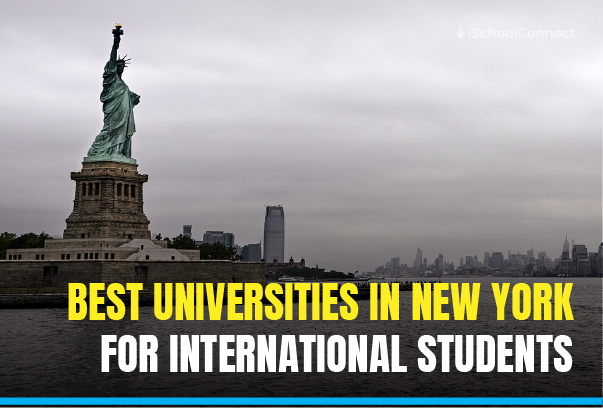Table of Contents
University rankings | An overview
Several universities worldwide are ranked to make it easier for students to know what they can expect when seeking admission. It may not be possible to sit in one corner of the world and know everything about a university located in some other country. While the university website may provide the necessary information, a third-party source can give you an accurate picture. Based on various factors, university rankings are reliable and should be considered. Employers also check university rankings to source graduates.
As a matter of fact, every ranking organization has a different university ranking structure and uses other criteria. University ranks consider research quality and revenue, surveys of academics and employers, staff-student ratio, and statistics like the number of international students. All in all, there are three major global university rankings that you should know of. Let us look at them.
QS World Ranking of Universities
QS World Ranking of Universities assesses a university’s performance across research, teaching, employability, and how “international” they are. Each criterion of the overall score is measured differently.
As a matter of fact, they use six indicators to provide the ranks. Four of these indicators are based on the “hard” data collected, while the remaining two, academic and employer reputation, depend on global surveys.
All in all, the six performance indicators include –
- Academic reputation (40%) – A global survey of 94,000+ academics.
- Citations per faculty (20%) – A research paper referred to another research paper.
- Student-to-faculty ratio (20%) – The number of academic staff employed relative to the number of students enrolled.
- Employer reputation (10%) – A global survey of close to 45,000 graduate employers.
- International faculty ratio (5%).
- International student ratio (5%).
The last two indicators measure how successful a university has been in attracting and catering to international students and academics.
Academic Ranking of World Universities (ARWU)
ARWU assesses university performance in a very different way. It measures prestige by considering the world’s most highly recognized researchers, especially in science and engineering. However, thirty percent of its score depends on the number of Nobel Prize and Fields Medal winners working as the staff or are alumni of the university. Another 20 percent depends on having highly cited researchers as staff members. As a matter of fact, it ranks over 1000 universities every year and publishes the top 1000.

ARWU uses six indicators to rank universities in the world, including –
- The number of alumni winning Nobel Prizes and Fields Medals (10%).
- Staff members who won Nobel Prizes and Fields Medals (20%).
- The number of highly cited researchers in 21 broad subject categories (20%).
- Articles published in nature and science (20%).
- The number of articles indexed in the Science Citation Index – Expanded and Social Sciences Citation Index (20%).
- The per capita academic performance of an institution (10%).
Times Higher Education World University Rankings
They judge world-class universities against all of their critical missions, including using demanding, global standards. All in all, the comprehensive system of ranking includes 13 separate performance indicators. The order is based only on teaching, research, knowledge transfer, and international outlook.
As a matter of fact, the performance indicators have five areas –
- Teaching (30%) – This includes a reputation survey and measures staff-to-student ratio, doctorate-to-bachelor’s ratio, doctorates-awarded-to-academic-staff ratio, and institutional income.
- Research (30%) includes a reputation survey and measures research income and productivity.
- Research citations (30%).
- International outlook (7.5%) measures the proportion of international students and staff and international collaboration.
- Industry income (2.5%) – This measures how much research income an institution earns from industry against the number of academic staff members it employs.
Which university rankings to consider?
All in all, it entirely depends on you. University rankings are generally consistent, and the results come after going through various valid sources. While there may be differences between global rankings and their methodologies, you should remember that with more than 20,000 universities worldwide, all the top-ranked universities are exceptional and exemplary.
The ARWU rankings give preference to historical reputation, awards, and accolades that may have been won 100 years ago; the Times Higher Education ranking provides more insight into how a university’s teaching faculty is. The QS rankings throw light on student experiences.
It is essential to have a good idea of the subject you want to study. Then, you can look at the subject rankings. If you are yet to make up your mind or are flexible about the subject you want to study, you can focus on the universities with many top-ranked subjects.
Employability and graduate rankings are good starting points when choosing universities for undergraduates. It allows you to judge based on employment opportunities and related on- and off-campus experiences.
Key takeaways
- Studying in a high-ranking university with solid industry ties can help you secure a position in a competitive job market after graduation.
- University rankings help maintain the institution’s position and improve the management. Indisputably, rankings are a reliable source.
- They can also influence national and international partnerships and collaborations.
- Besides university rankings, you must also pay attention to the facilities available, the positive culture, and an innovative learning environment while seeking admission.
- In addition to this, if you want more information, drop a comment below or get in touch with us!
Liked this blog? Then read Harvard University Free Online Courses | Top 5 courses for students!
FAQs
Question 1: What are the five top-ranked universities in the world?
Answer: The five top-ranked universities globally are Harvard University, Massachusetts Institute of Technology, Stanford University, The University of Oxford, and the University of California-Berkeley.
Question 2: What qualities do international students demand the most when selecting a university?
Answer: Most international students look for “value in recent times.” It includes knowledge and employment prospects.
Question 3: Why can’t I find my university in the world university rankings?
Answer: There are tens of thousands of universities globally, and it is impossible to rank them. You must note that if your university isn’t featured, it does not mean it is terrible.






